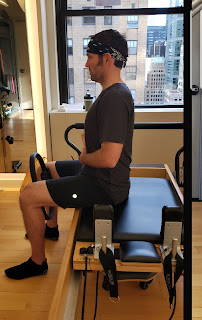What is Good Posture | Part 3-4

Posture | Part 3-4 by: Lisa Kocsis PART 3... WHAT IS GOOD POSTURE? Now that I've addressed what poor posture is and the causes and negative impact of such, I'm going to discuss what good posture is and how we can improve our postural alignment. There's an ideal anatomical position for the body to be in for the spine and joint structures to be properly aligned and supported by the surrounding musculature. Our spine has three curves, referred to as... cervical spine (neck), thoracic spine (correlates to our rib cage) and the lumbar spine (low back). While there are variations of the degree of the curves in these regions based upon our individual anatomical structure, we can greatly alter the position of our spine by how we sit at our desk, stand, get in and out of a chair and how we walk (our gait). SEATED POSTURE: Here are some pointers to keep in mind when sitting... •Sit directly on top of your SITS bones (bony prominences in the glutes).



